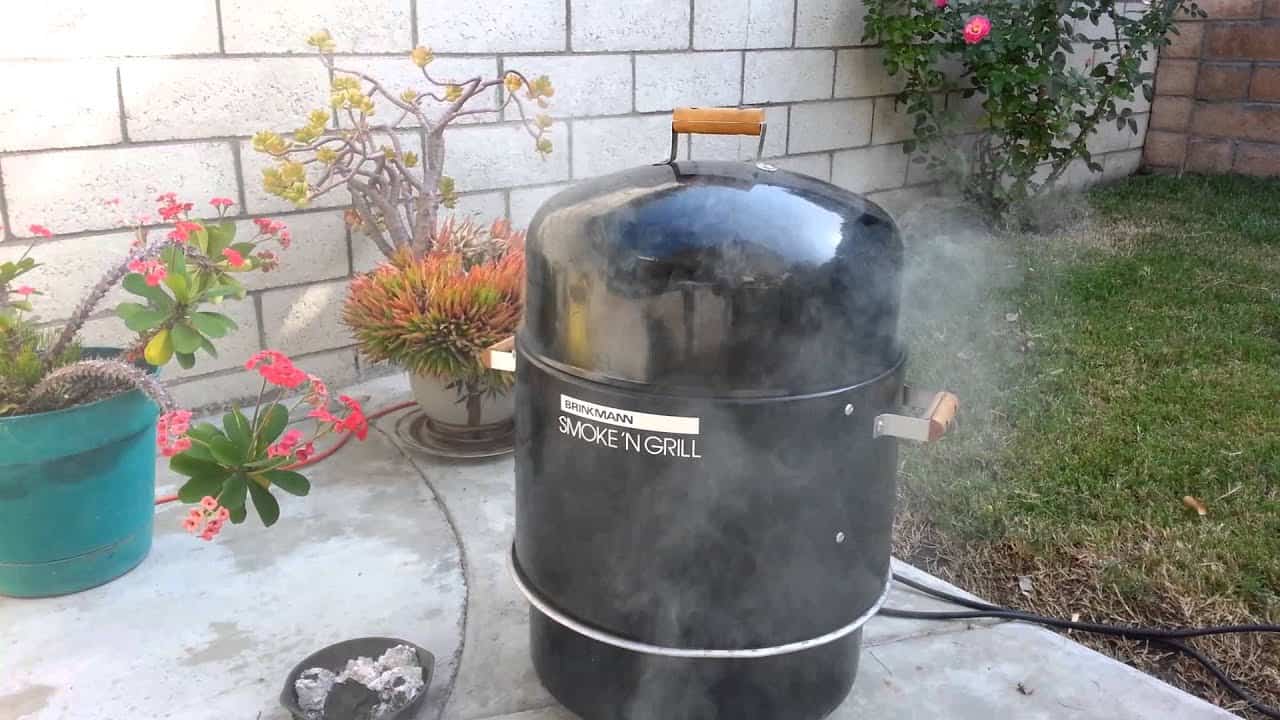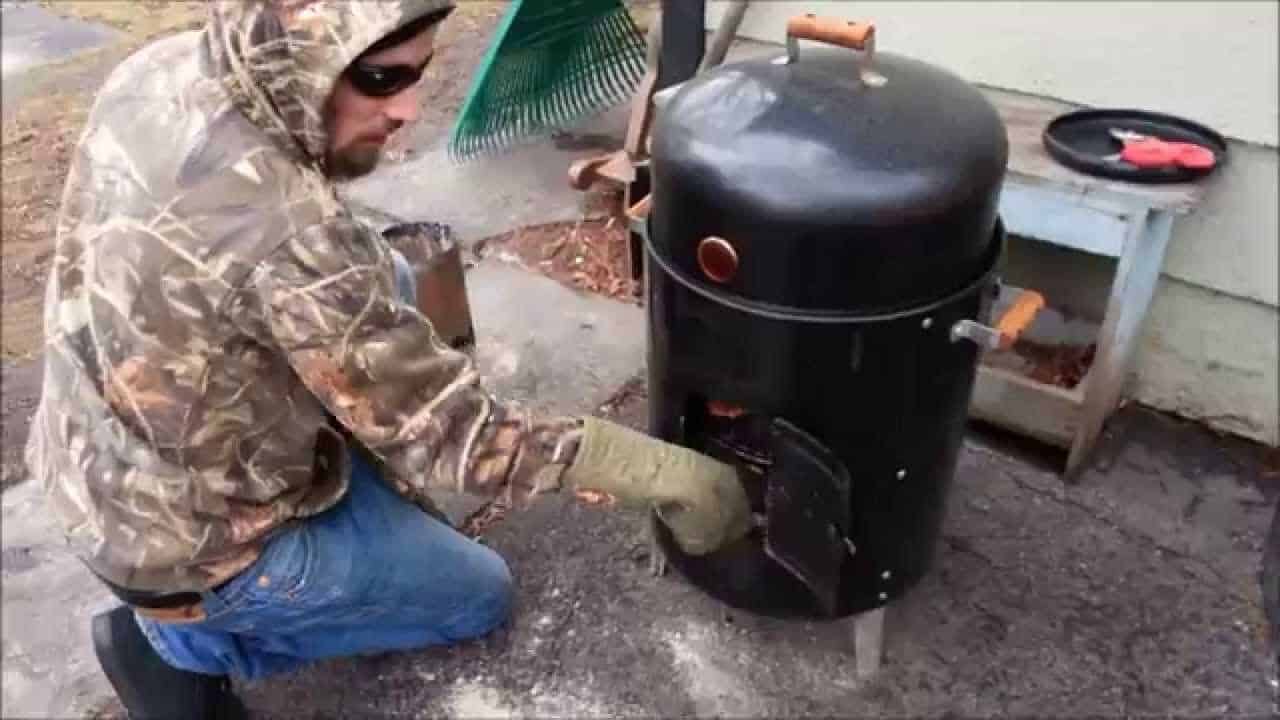To use a Brinkmann smoker, fill the water pan, add charcoal to the charcoal pan, light the charcoal, adjust the vents for temperature control, and place your food on the racks for smoking.
From Novice to Pitmaster: Tips and Tricks for Using a Brinkmann Smoker
Brinkmann Smokers have been a popular choice among barbecue enthusiasts for many years. The company was founded in 1975 by Ernie Brinkmann and quickly gained a reputation for producing high-quality smokers that deliver delicious, smoky flavors. Brinkmann Smokers are known for their durability, affordability, and ease of use, making them a favorite among both beginners and experienced pitmasters.
One of the advantages of using a Brinkmann Smoker is its versatility. Whether you’re smoking ribs, brisket, chicken, or even vegetables, a Brinkmann Smoker can handle it all. The design of these smokers allows for even heat distribution and consistent temperatures, resulting in perfectly smoked meats every time.
Additionally, Brinkmann Smokers are designed to be user-friendly, with features like adjustable vents and easy-to-read temperature gauges that make it easy to control the cooking process.
Understanding the Different Types of Brinkmann Smokers
There are several different types of Brinkmann Smokers available on the market, each with its own unique features and benefits.
Vertical water smokers are one of the most popular types of Brinkmann Smokers. These smokers consist of a charcoal pan at the bottom, a water pan in the middle, and cooking grates at the top. The water pan helps to regulate the temperature and keep the meat moist during the smoking process. Vertical water smokers are great for beginners because they are easy to use and maintain.
Offset smokers, also known as barrel smokers or horizontal smokers, have a separate firebox attached to the side of the main cooking chamber. This design allows for indirect heat cooking, which is ideal for smoking larger cuts of meat like brisket or whole chickens. Offset smokers require a bit more skill to operate than vertical water smokers but offer more versatility in terms of cooking capacity and temperature control.
Electric smokers are a convenient option for those who want to smoke meat without the hassle of charcoal or wood. These smokers use electricity to heat up wood chips or pellets, producing smoke that infuses the meat with flavor. Electric smokers are easy to use and maintain, making them a popular choice for beginners or those who prefer a set-it-and-forget-it approach to smoking.
Pellet smokers are another type of Brinkmann Smoker that uses wood pellets as the fuel source. These smokers have a hopper that automatically feeds the pellets into a fire pot, creating smoke and heat. Pellet smokers offer precise temperature control and are known for producing consistent results. They are a great option for those who want the convenience of an electric smoker but still want the authentic smoky flavor of wood.
Choosing the Right Wood for Smoking
The type of wood you choose for smoking can greatly impact the flavor of your meat. Different types of wood impart different flavors, so it’s important to choose the right wood for the type of meat you’re smoking.
Some popular types of wood for smoking include:
– Hickory: Hickory is one of the most commonly used woods for smoking. It has a strong, smoky flavor that pairs well with pork, beef, and poultry.
– Mesquite: Mesquite is a bold and intense wood that is often used in Texas-style barbecue. It has a strong, earthy flavor that works well with beef and game meats.
– Apple: Applewood has a mild and slightly sweet flavor that is perfect for smoking poultry, pork, and fish. It adds a subtle fruity aroma to the meat.
– Cherry: Cherrywood has a sweet and fruity flavor that pairs well with pork, poultry, and game meats. It adds a beautiful reddish color to the meat.
– Oak: Oak is a versatile wood that can be used with almost any type of meat. It has a mild flavor that enhances the natural flavors of the meat without overpowering it.
When choosing wood for smoking, it’s important to consider the intensity of the flavor you want to achieve and how it will complement the meat you’re smoking. It’s also a good idea to experiment with different types of wood to find your preferred flavor profile.
Preparing the Brinkmann Smoker for Use
Before you start smoking, it’s important to properly prepare your Brinkmann Smoker. This involves assembling the smoker, seasoning it, and preparing the charcoal or wood chips.
Assembling the smoker is usually a straightforward process that involves following the manufacturer’s instructions. Make sure to tighten all screws and fittings to ensure a secure and stable smoker.
Seasoning the smoker is an important step that helps to remove any manufacturing residues and prepare the smoker for use. To season your Brinkmann Smoker, start by coating the inside of the cooking chamber with a thin layer of cooking oil. Then, build a small fire in the smoker and let it burn for about 2 hours, maintaining a temperature of around 250°F (121°C). This process helps to burn off any chemicals or impurities and creates a protective layer on the interior surfaces of the smoker.
Preparing the charcoal or wood chips involves soaking them in water for about 30 minutes before use. This helps to prevent them from burning too quickly and produces a steady stream of smoke. Once soaked, drain the excess water and place the charcoal or wood chips in the designated area of your Brinkmann Smoker.
Lighting the Fire and Maintaining Temperature
Once your Brinkmann Smoker is prepared, it’s time to light the fire and start smoking. Lighting the fire can be done using either charcoal or wood chips, depending on your preference.
To light a charcoal fire, start by placing a small amount of charcoal in the firebox or charcoal pan of your Brinkmann Smoker. Use a chimney starter or lighter fluid to ignite the charcoal. Once the charcoal is lit, let it burn until it turns gray and ashy. Then, carefully transfer the lit charcoal to the firebox or charcoal pan of your smoker.
To light a wood chip fire, start by placing a handful of soaked wood chips in the firebox or designated area of your Brinkmann Smoker. Use a lighter or match to ignite the wood chips. Once the wood chips are lit, let them burn until they start producing smoke. Then, carefully transfer additional soaked wood chips to maintain a steady stream of smoke.
Controlling the temperature in your Brinkmann Smoker is crucial for achieving perfectly smoked meats. Most Brinkmann Smokers have adjustable vents that allow you to control the airflow and, therefore, the temperature inside the smoker. Opening the vents allows more oxygen to enter the smoker, increasing the temperature, while closing the vents restricts airflow and lowers the temperature.
It’s important to monitor the temperature throughout the smoking process and make adjustments as needed. Aim for a temperature between 225°F (107°C) and 250°F (121°C) for most smoking applications. Use a reliable thermometer to measure the temperature inside the smoker and make adjustments to the vents accordingly.
Adding Flavor with Marinades and Rubs
Marinades and rubs are a great way to add flavor to your smoked meats. They can enhance the natural flavors of the meat and create a delicious crust or bark on the exterior.
There are many different types of marinades and rubs available, each with its own unique flavor profile. Some popular marinade ingredients include soy sauce, Worcestershire sauce, citrus juices, vinegar, and various herbs and spices. Marinades are typically used for longer smoking sessions, as they require more time for the flavors to penetrate the meat.
Rubs, on the other hand, are dry mixtures of herbs, spices, and other seasonings that are applied directly to the meat. They can be used immediately before smoking or applied several hours in advance to allow the flavors to develop. Rubs are a great option for shorter smoking sessions or when you want to add a quick burst of flavor.
When applying marinades or rubs, make sure to coat the meat evenly and thoroughly. Use your hands or a brush to massage the marinade into the meat, ensuring that it reaches all the nooks and crannies. For rubs, sprinkle a generous amount onto the meat and use your hands to rub it in, creating a flavorful crust.
The Art of Smoking Meat: Time and Temperature
Smoking meat is as much an art as it is a science. It requires patience, practice, and an understanding of the ideal time and temperature for different types of meat.
The ideal smoking temperature for most meats is between 225°F (107°C) and 250°F (121°C). This low and slow cooking method allows the meat to slowly break down and become tender while infusing it with smoky flavors. Maintaining a consistent temperature throughout the smoking process is crucial for achieving the best results.
The smoking time for different types of meat can vary depending on factors such as size, thickness, and desired doneness. As a general rule of thumb, you can expect to smoke meats for the following times:
– Ribs: Baby back ribs typically take around 4-6 hours to smoke, while spare ribs can take 5-7 hours. The meat should be tender and pull away from the bone easily.
– Brisket: Brisket is a tough cut of meat that requires a long smoking time to become tender. A whole brisket can take anywhere from 10-16 hours to smoke, depending on its size. The meat should be fork-tender and have an internal temperature of around 195°F (90°C) to 205°F (96°C).
– Chicken: Whole chickens can take around 2-3 hours to smoke, while chicken pieces like thighs or drumsticks can take 1-2 hours. The meat should be cooked through and have an internal temperature of 165°F (74°C).
– Pork shoulder: Pork shoulder, also known as pork butt, is a forgiving cut of meat that can withstand longer smoking times. It typically takes around 10-12 hours to smoke, until the meat is tender and easily pulled apart.
It’s important to note that these times are just guidelines and can vary depending on your specific smoker and cooking conditions. Always use a reliable meat thermometer to check for doneness and adjust the cooking time as needed.
Checking for Doneness: Internal Temperature
Checking the internal temperature of your smoked meats is crucial for ensuring they are cooked to the proper doneness and safe to eat. Using a meat thermometer is the most accurate way to determine the internal temperature of the meat.
Different types of meat have different ideal internal temperatures for doneness. Here are some general guidelines:
– Beef: For medium-rare beef, aim for an internal temperature of around 135°F (57°C). For medium, aim for 145°F (63°C). For well-done beef, aim for 160°F (71°C) or higher.
– Pork: Pork should be cooked to an internal temperature of at least 145°F (63°C) for safe consumption. However, many people prefer pork to be cooked to a higher temperature, around 160°F (71°C) or higher, for a more tender texture.
– Poultry: Chicken and turkey should be cooked to an internal temperature of at least 165°F (74°C) for safe consumption. Make sure to check the temperature in the thickest part of the meat, avoiding contact with bones.
– Fish: Fish should be cooked to an internal temperature of around 145°F (63°C) or until the flesh flakes easily with a fork.
It’s important to note that these temperatures are just guidelines and can vary depending on personal preference and the specific cut of meat. Always use a meat thermometer to check for doneness and adjust the cooking time as needed.
Resting and Slicing the Meat
After smoking your meat to perfection, it’s important to let it rest before slicing. Resting allows the juices to redistribute throughout the meat, resulting in a more flavorful and tender end product.
To rest your smoked meat, remove it from the smoker and place it on a cutting board or platter. Tent it loosely with aluminum foil to keep it warm and let it rest for about 10-15 minutes. This resting period allows the meat to relax and retain its juices, ensuring a moist and flavorful final product.
Once the meat has rested, it’s time to slice and serve. Use a sharp knife to slice the meat against the grain, which helps to break up the muscle fibers and create tender slices. The thickness of the slices will depend on personal preference and the type of meat you’re serving. For example, brisket is often sliced thin for sandwiches, while pork shoulder can be sliced thicker for pulled pork.
Cleaning and Maintaining Your Brinkmann Smoker
Properly cleaning and maintaining your Brinkmann Smoker is essential for its longevity and performance. Here are some tips for keeping your smoker in top shape:
– After each use, remove any leftover ashes or debris from the firebox or charcoal pan. Use a brush or scraper to clean off any stuck-on residue.
– Clean the cooking grates with a wire brush or grill brush to remove any food particles or grease. If necessary, you can also soak the grates in warm soapy water to help loosen stubborn residue.
– Wipe down the interior and exterior surfaces of the smoker with a damp cloth or sponge. Avoid using harsh chemicals or abrasive cleaners, as they can damage the finish of the smoker.
– Periodically check and clean the vents and air intakes to ensure they are not clogged with ash or debris. This will help maintain proper airflow and temperature control.
– Store your Brinkmann Smoker in a dry and protected area when not in use. If possible, cover it with a waterproof cover to protect it from the elements.
Regular cleaning and maintenance will not only extend the life of your Brinkmann Smoker but also ensure that it continues to perform at its best.
Troubleshooting Common Issues with Brinkmann Smokers
While Brinkmann Smokers are known for their reliability, there may be times when you encounter common issues. Here are some troubleshooting tips for addressing these issues:
– Temperature fluctuations: If you’re experiencing temperature fluctuations, check the vents and air intakes to ensure they are properly adjusted. Also, make sure there is enough fuel in the smoker and that it is burning evenly. Adjust the vents as needed to maintain a consistent temperature.
– Excessive smoke: If you’re getting too much smoke, check the wood chips or pellets to ensure they are not smoldering or burning too quickly. Soaking them for a longer period of time can help slow down the burn rate. Also, make sure the vents are properly adjusted to control the airflow.
– Uneven cooking: If your oven is not calibrated correctly, it may result in uneven cooking. This means that some parts of your dish may be overcooked while others are undercooked. This can be frustrating and can affect the overall taste and texture of your food. To avoid this, it is important to regularly check and calibrate your oven to ensure that it is heating evenly.
Originally posted 2024-02-07 01:49:45.


